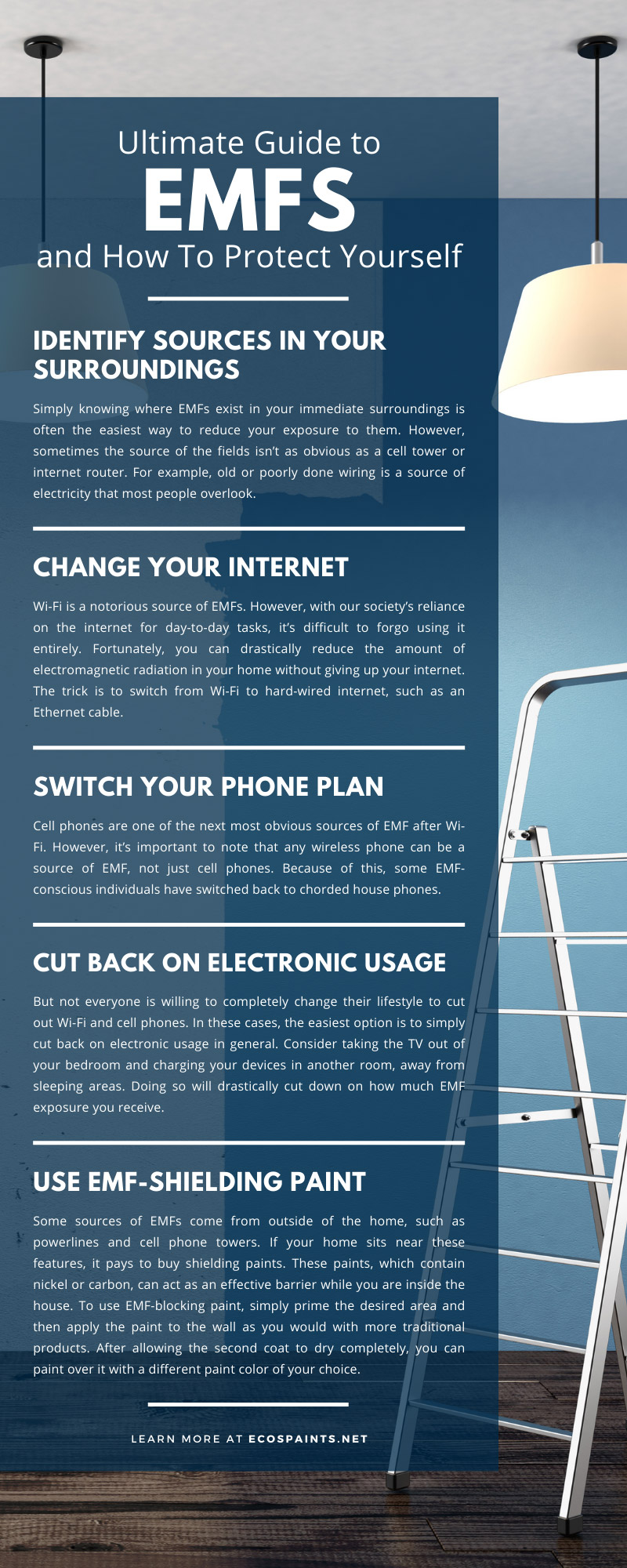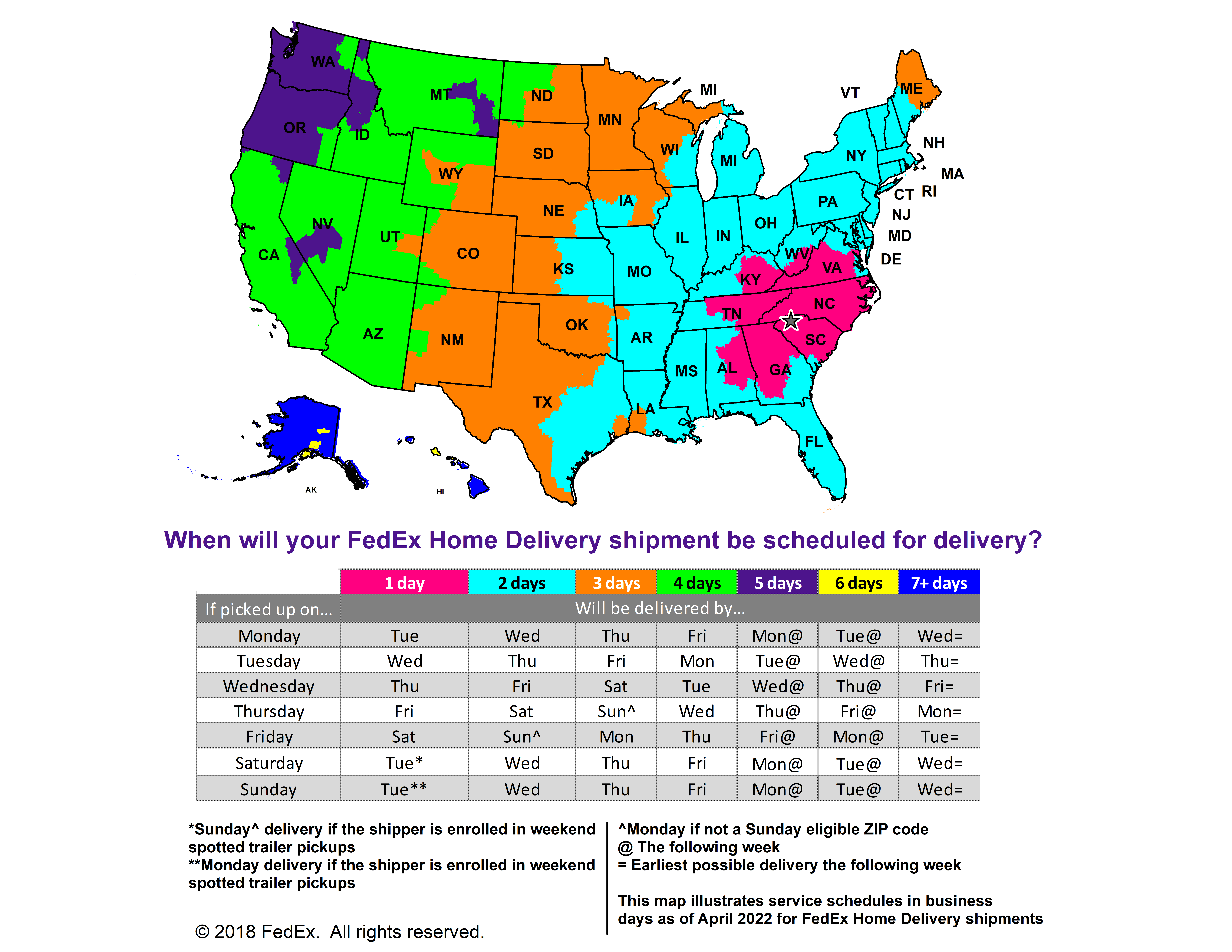Ultimate Guide to EMFs and How To Protect Yourself

Any electrician will tell you that electricity and wiring can be dangerous to work with. Electricity can cause electrocution, burns, and explosions, all of which can lead to severe injury or death.
However, there are also other, less obvious potential hazards attached to electric devices. They relate to the concept of electromagnetic fields, also known as EMFs. To offer a better understanding of this concept, we’ve compiled our ultimate guide to EMFs and how to protect yourself from them.
What Are Electromagnetic Fields?
Our world is full of electromagnetic energy. This energy travels through space at different rates and speeds, which produce different types of waves. We use different waves for different purposes. For example, high-frequency X-rays allow doctors to view broken bones, while slower frequency radio waves enable us to listen to music on the way home from work. When the waves have enough electrical pressure behind them, they can gather in a single area known as electromagnetic fields.
Our bodies can physically perceive a few of these waves and fields in the form of color and light. However, even when we can’t see it, that energy can still travel through space and impact the world around us. This concept is called radiation.
Common Sources of Electromagnetic Fields
We encounter a variety of electromagnetic fields and waves in our everyday life from both natural and human-made sources. A few of the more common sources include:
- The Earth’s magnetic fields
- Radio
- Television
- Radar
- Cell phones
- Wi-Fi
- Satellites
- Smart meters
- Smart appliances and other devices
- Powerlines
- Microwave ovens
- Bluetooth devices
- “Dirty electricity”
There are other sources of electromagnetic waves that don’t necessarily produce EMFs. Electromagnetic waves from the sun warm the earth, while waves interacting with molecules around us allow us to perceive color. However, not all of these waves cause radiation.
Are Electromagnetic Fields Dangerous?
The World Health Organization and the US Environmental Protection Agency have both publicly declared that EMFs and the radiation that comes from them, as it appears in these everyday sources, are not dangerous. However, some anecdotal reports suggest that it may potentially cause a variety of general health issues, such as:
- Headaches
- Nausea
- Fatigue
- Loss of sleep
- Trouble seeing
There has yet to emerge a study that shows a direct link between EMFs and these symptoms. However, more research is still needed. Because of this small note of uncertainty, people have begun looking for ways to protect themselves from EMFs.
Tips for Protecting Yourself From EMFs
Identify Sources in Your Surroundings
Simply knowing where EMFs exist in your immediate surroundings is often the easiest way to reduce your exposure to them. However, sometimes the source of the fields isn’t as obvious as a cell tower or internet router. For example, old or poorly done wiring is a source of electricity that most people overlook.
EMF consultants can assess electromagnetic radiation in your home using specialized equipment. A consultant can help you identify the less-than-obvious sources of radiation and offer suggestions to remedy the situation.
Change Your Internet
Wi-Fi is a notorious source of EMFs. However, with our society’s reliance on the internet for day-to-day tasks, it’s difficult to forgo using it entirely. Fortunately, you can drastically reduce the amount of electromagnetic radiation in your home without giving up your internet.
The trick is to switch from Wi-Fi to hard-wired internet, such as an Ethernet cable. Typically, you can hook a laptop up to this kind of connection, though you will need to leave your computer in the same spot. Still, there are other benefits to this. For instance, Ethernet is typically faster than Wi-Fi and less likely to experience lag.
Switch Your Phone Plan
Cell phones are one of the next most obvious sources of EMF after Wi-Fi. However, it’s important to note that any wireless phone can be a source of EMF, not just cell phones. Because of this, some EMF-conscious individuals have switched back to corded house phones.
But, as with the internet, it’s not always feasible to go without a cell phone entirely. Several organizations have released lists of cellphones with lower radiation levels than others. You can also consider using a cellphone without internet access.
Cut Back on Electronic Usage
Not everyone is willing to completely change their lifestyle to cut out Wi-Fi and cell phones. In these cases, the easiest option is to simply cut back on electronic usage in general. There are a variety of ways to do this. For example:
- Have designated times of day for computer activities
- Don’t check work emails off the clock
- Cut back on social media
- Remove time-consuming apps from your phone
- Keep the dinner table screen-free
- Remove electronics from the bedroom
Consider taking the TV out of your bedroom and charging your devices in another room, away from sleeping areas. Doing so will drastically cut down on how much EMF exposure you receive.
Reexamine Your Home’s Wiring
We’ve already mentioned that houses with poor wiring can have higher amounts of EMF. However, even homes with quality wiring often have “hotspots” with higher levels of EMF. Such areas include:
- Utility meters
- Dimmer switches
- Battery chargers
- Inverters
- Home intercoms
- AC units
- Transformers
- Fluorescent lights
- Fuse boxes
In some cases, a homeowner can change these things. For example, you can switch to energy-efficient lights or choose not to install dimmer switches. When you can’t remove the source, such as utility meters or fuse boxes, try not to place sleeping areas near these locations.
Use EMF-Shielding Paint
Some sources of EMFs come from outside of the home, such as power lines and cell phone towers. If your home sits near these features, it pays to buy shielding paints. These paints, which contain nickel or carbon, can act as an effective barrier while you are inside the house.
To use EMF-blocking paint, simply prime the desired area and then apply the paint to the wall as you would with regular paint. After allowing the second coat to dry completely, you can paint over it with a different paint color of your choice.
ECOS Paints knows that concerns about EMFs are more prominent than ever. That’s why we have Wi-Fi signal blocking paint to help reduce the amount of radiation in your home.



























